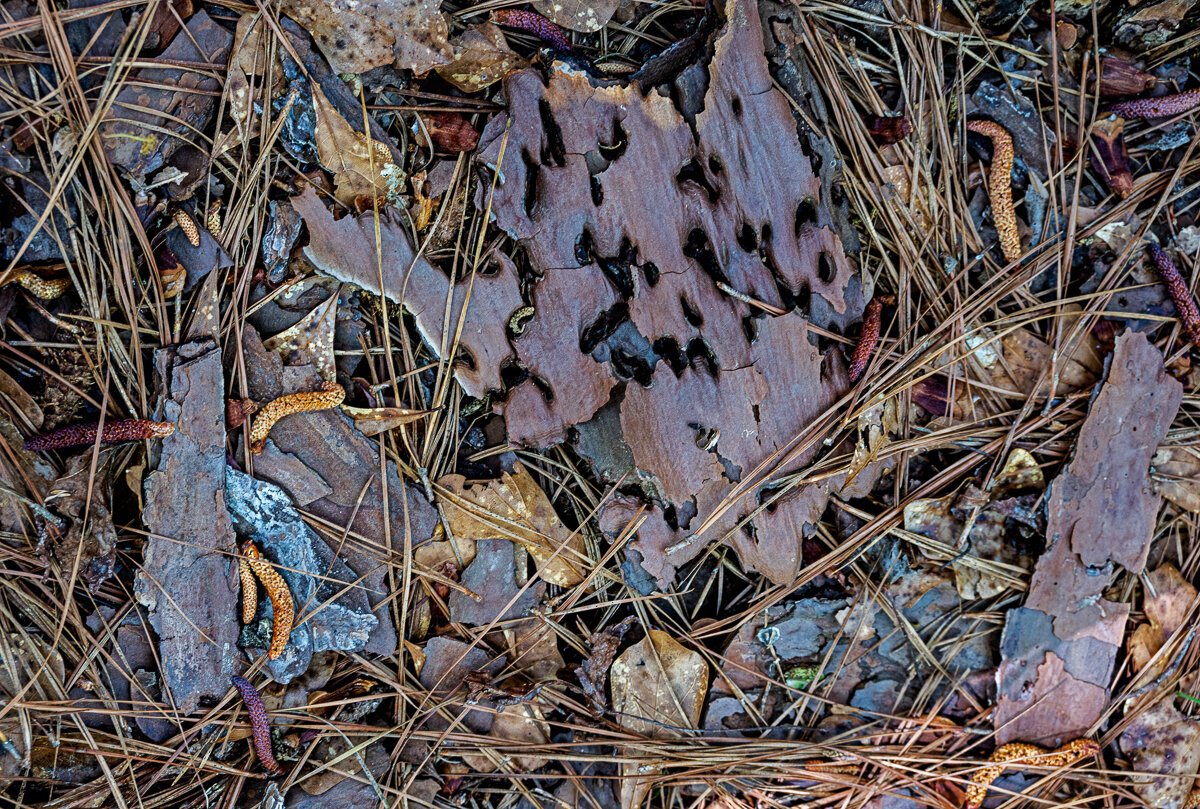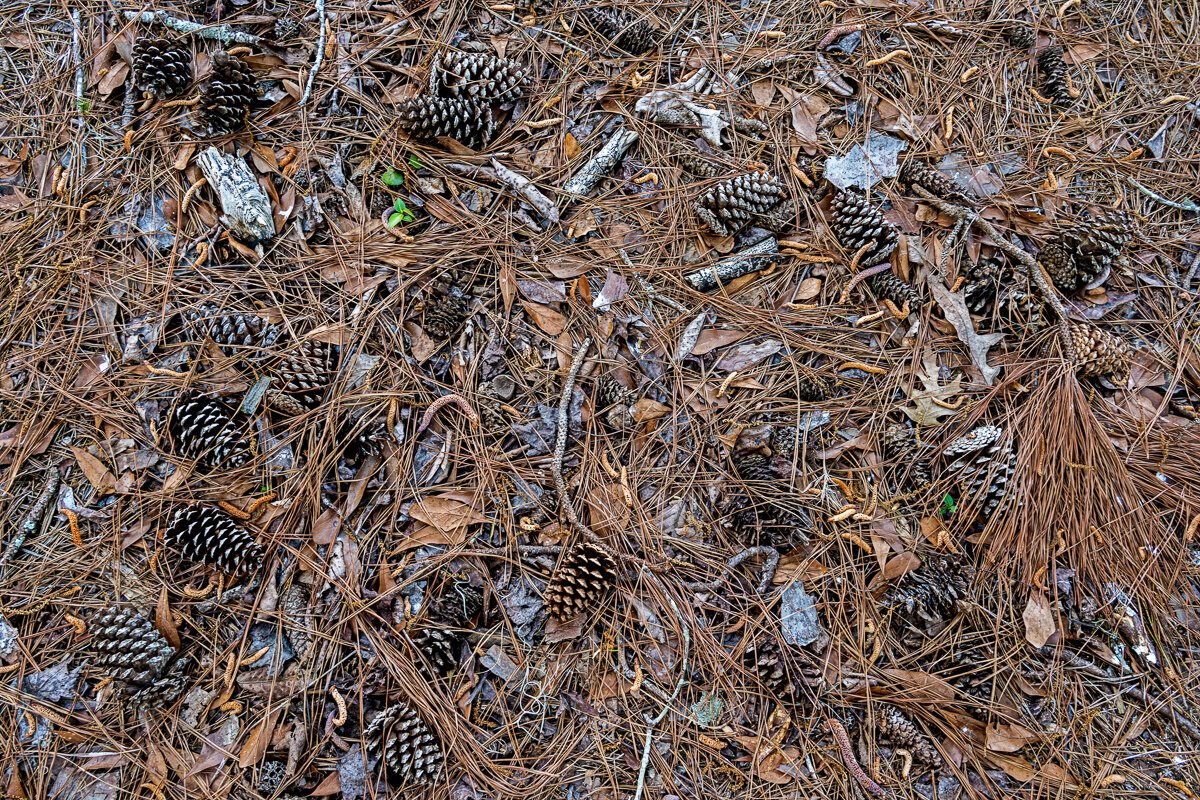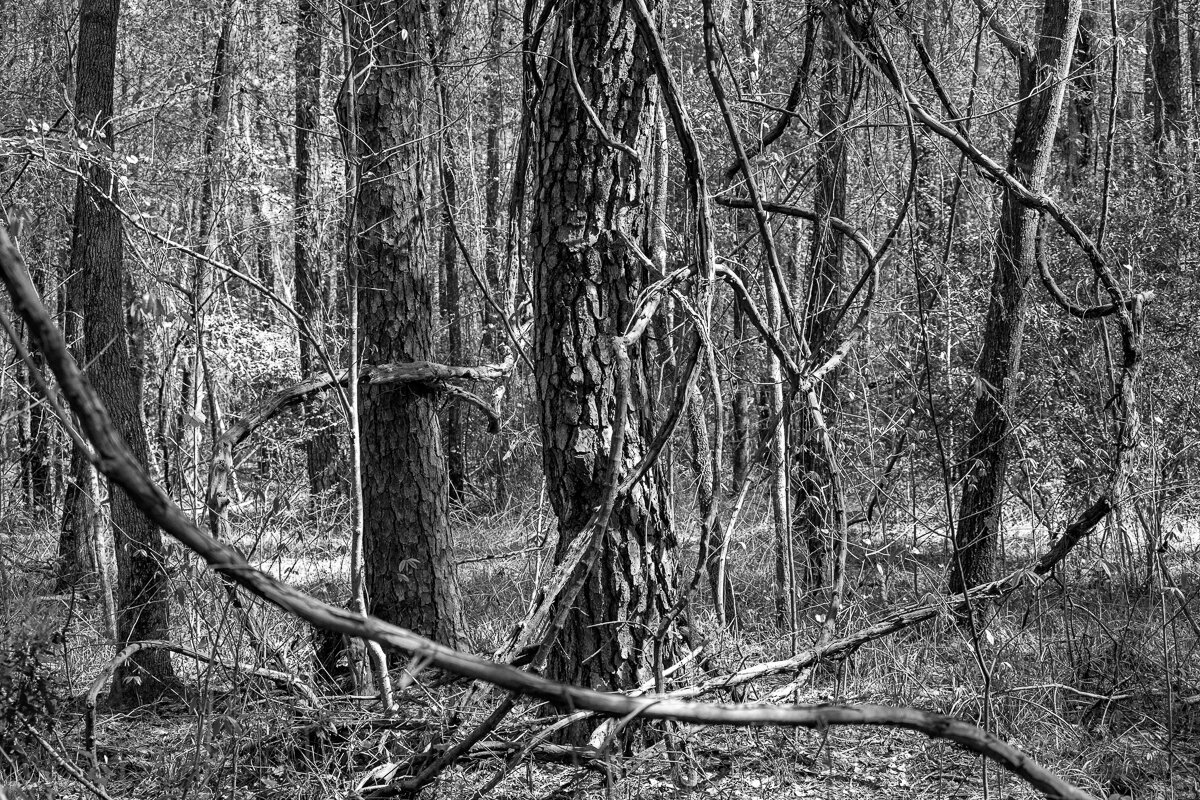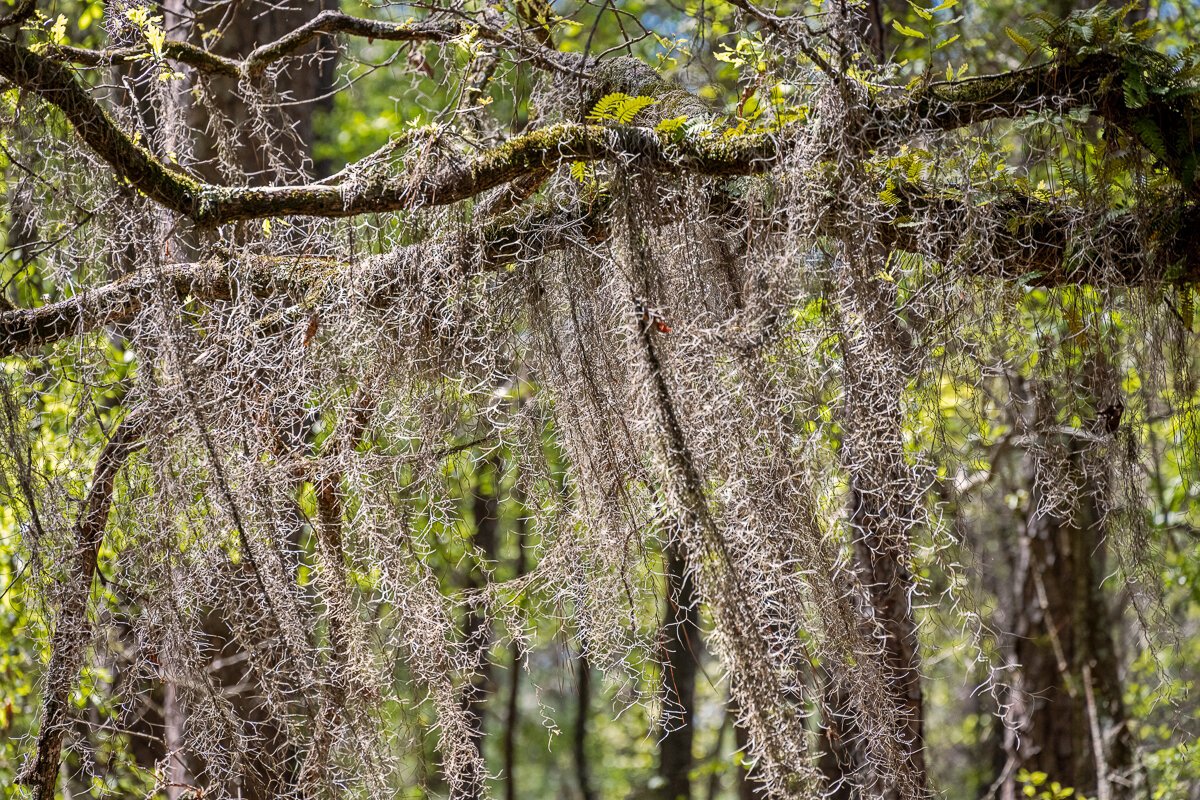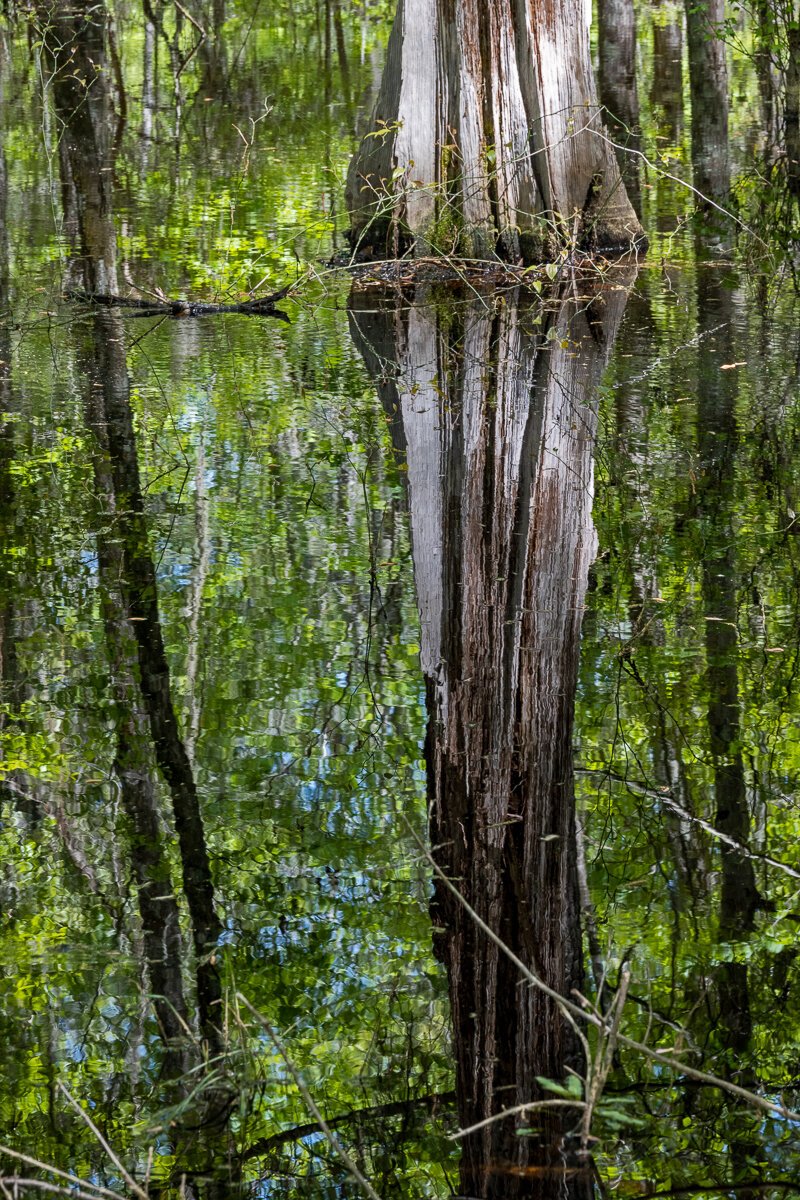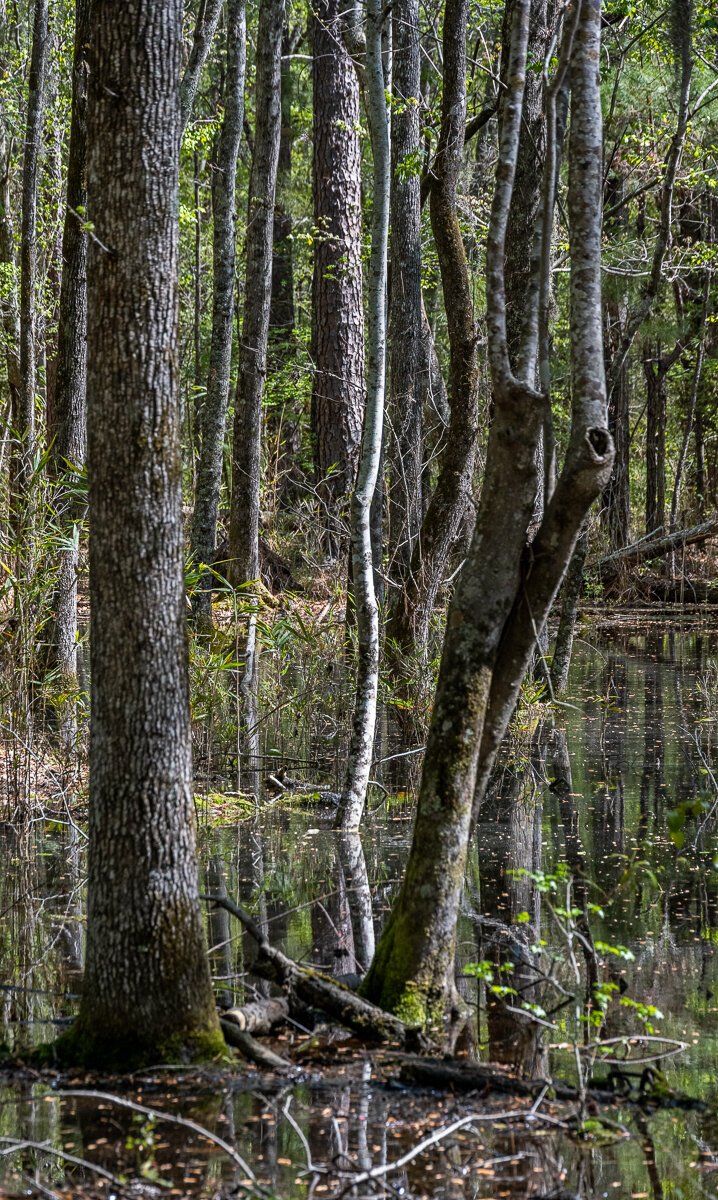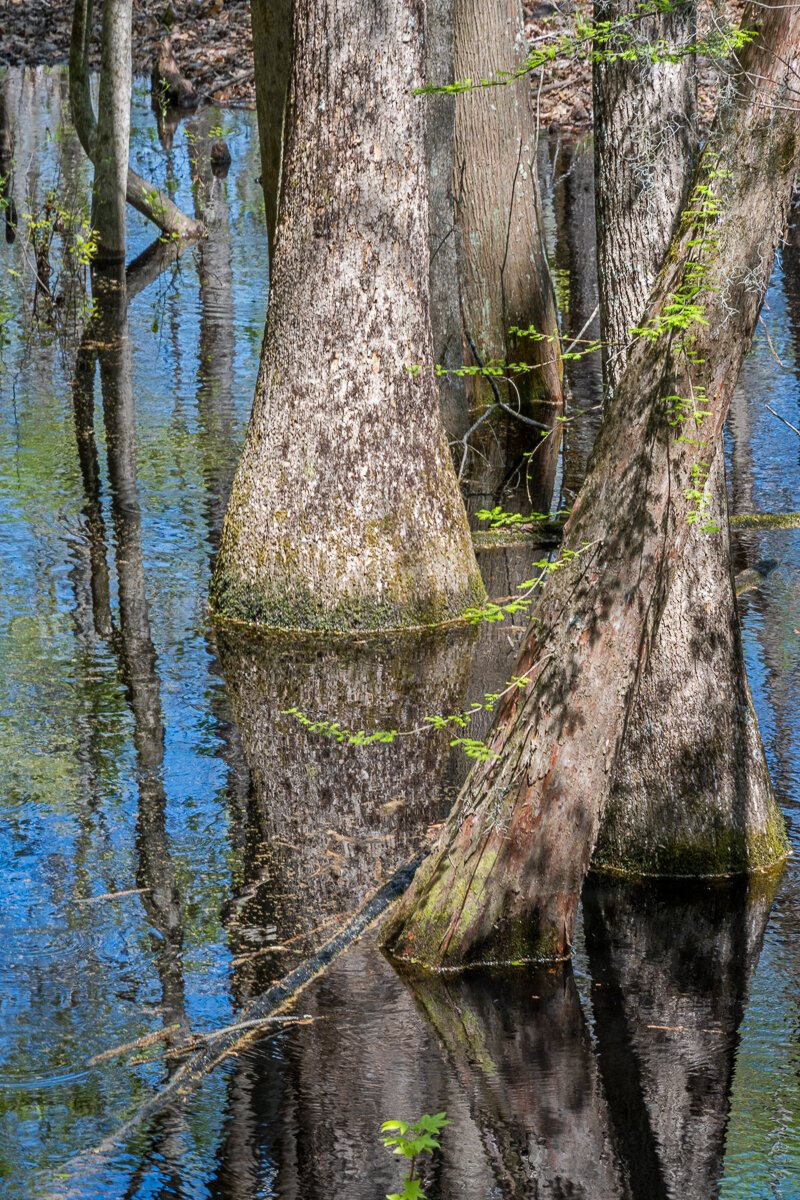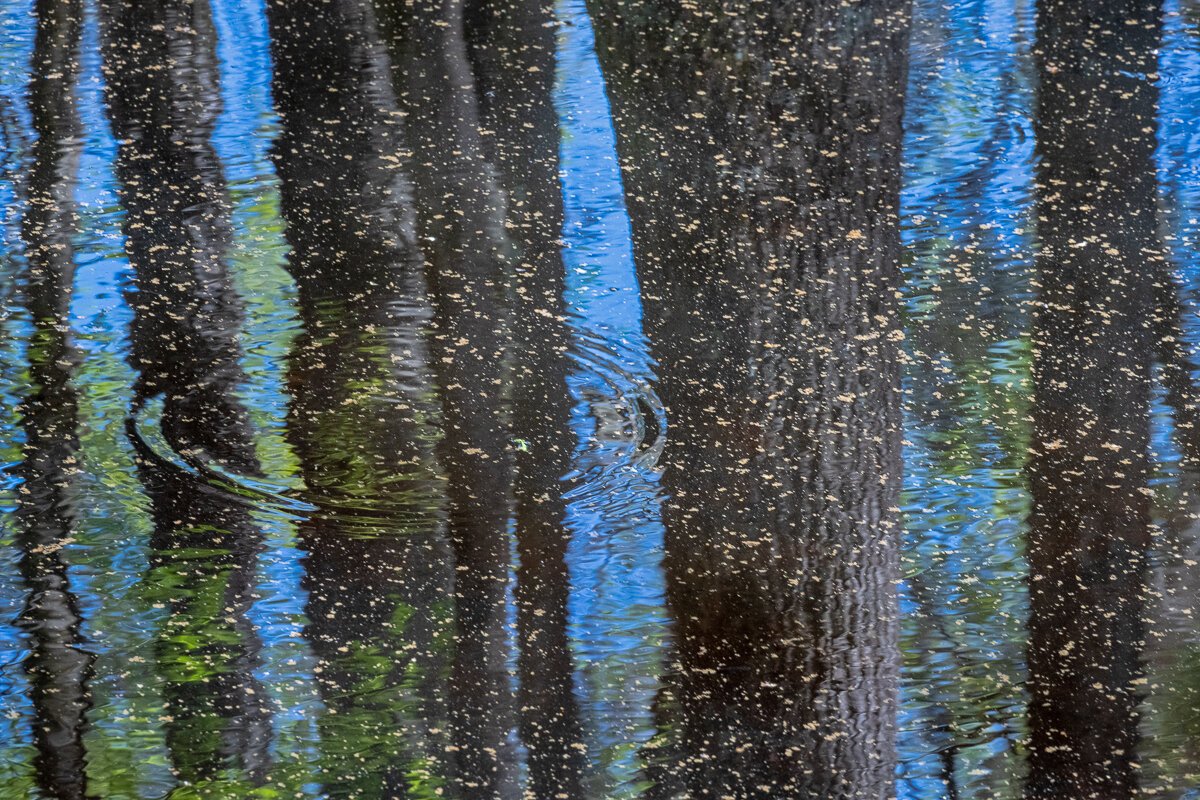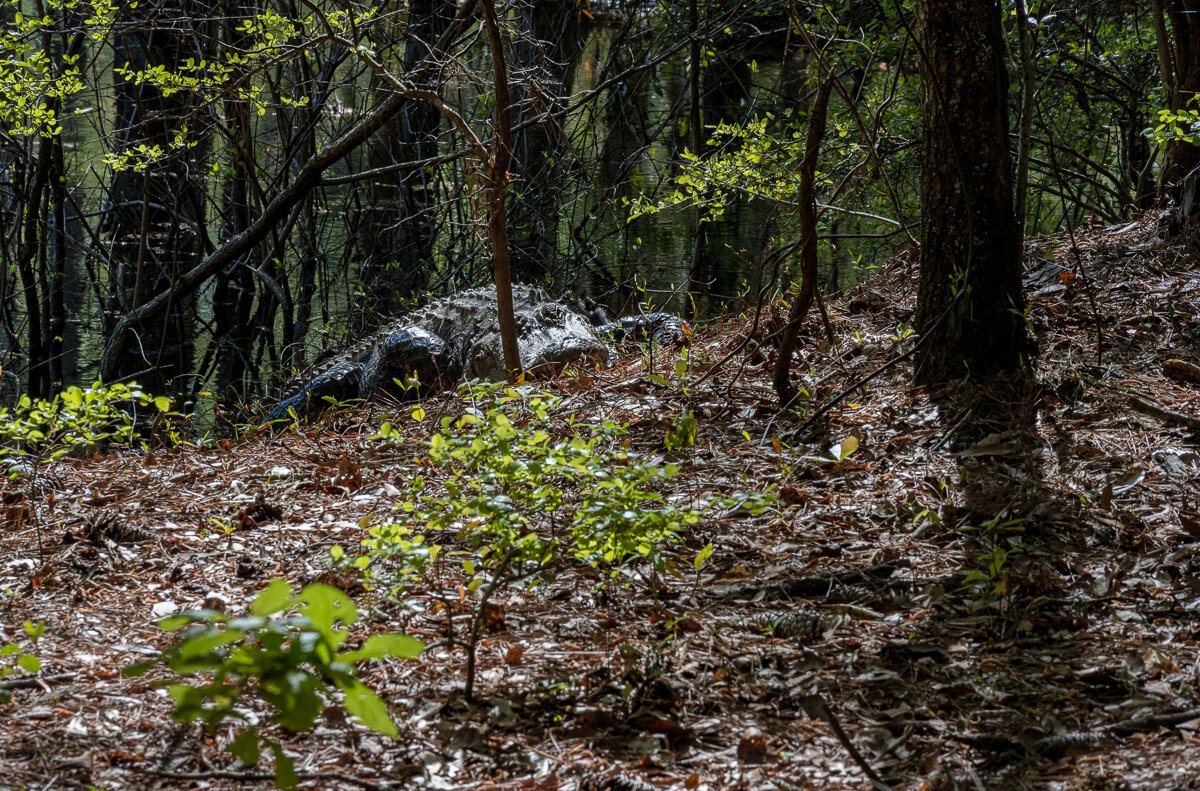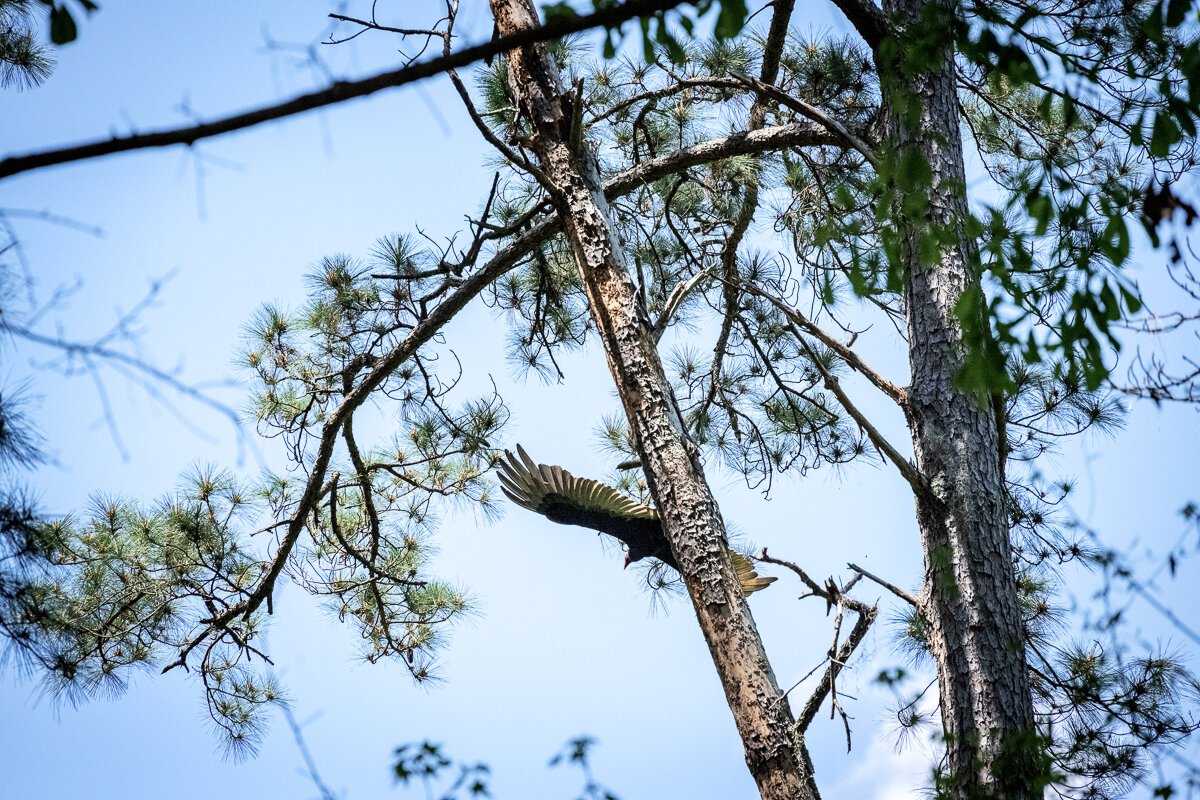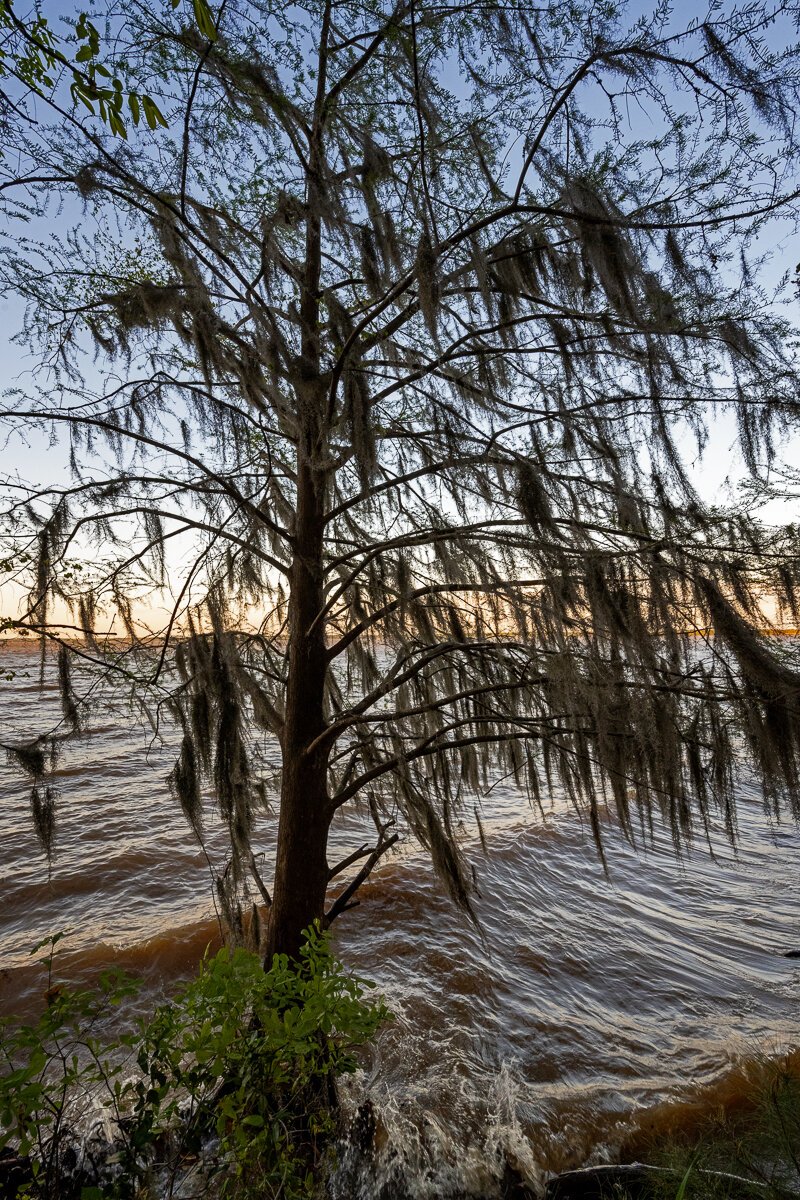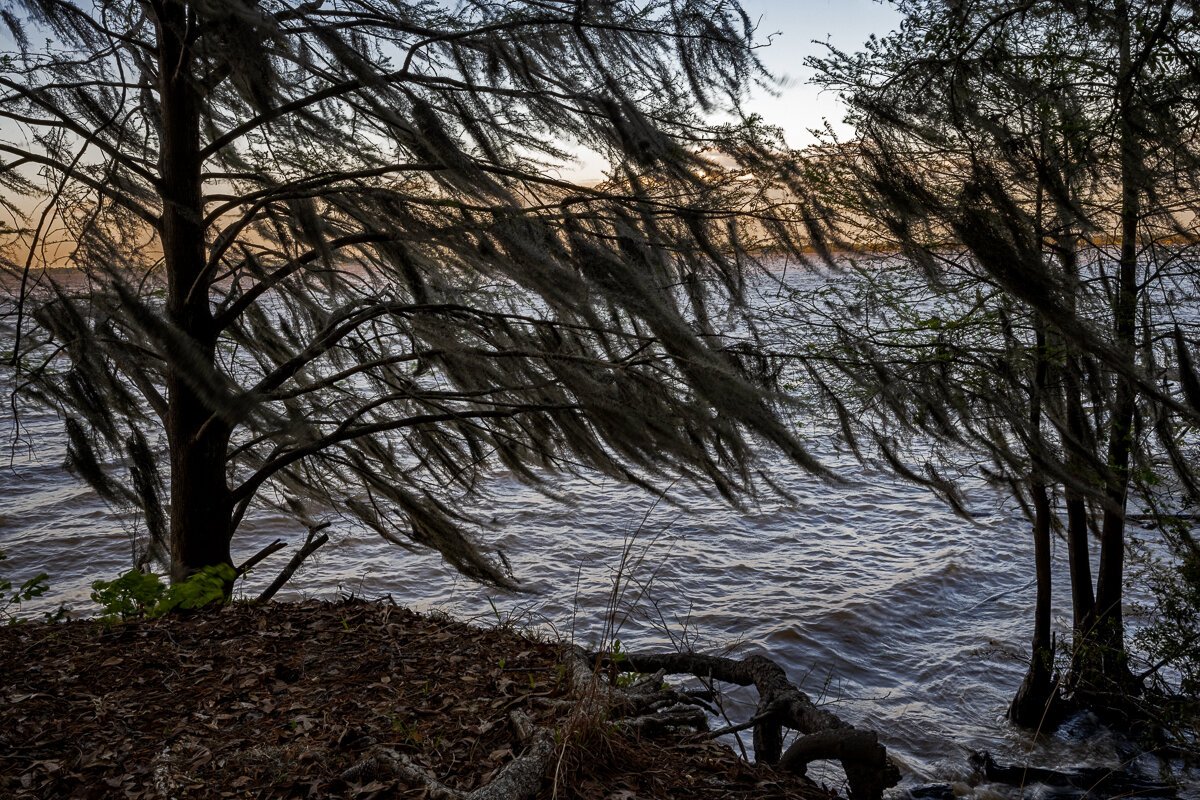Lake Marion and Santee State Park, March Went Out Like a Lion
Lake Marion Before the Storm
On the last day of March, I had to make an impromptu trip to Santee State Park in South Carolina due to weather. The temperature was about to drop into the low twenties in Asheville and I didn’t want to winterize and then de-winterize my mini RV again. Santee, 3-1/2 hours from my home, was the closest place predicted to be above freezing. On the way there I drove through some incredible downpours. Western North Carolina and the upcountry in South Carolina experienced numerous powerful thunderstorms in February and March, a clear sign of climate change. When I got to Santee State Park, there hadn’t been any rain yet, but clouds were amassing in the sky. Although I knew bad weather was on its way, the clouds were beautiful to behold. Below are two more images. The campground is right by the lakeshore and there are hiking trails along the shoreline. When the sun was descending it illuminated the clouds in an almost divine way.
Heavenly Clouds
Convergence, Lake Marion
That night there were powerful storms with thunder and lightning. The wind really picked up after the rain passed through, so I decided to hike with my dog in the inland section of the park the following day. There is a 7.5 mile bike/hiking trail that goes through the woods and passes near some inlets from the lake where cypress trees grow.
Sunlit Branches, Santee State Park
As I walked through the forest, sunlight filtered through the woods and highlighted branches making them glow. The leaves seemed to dance in the light.
Yellow Green Leaves Dancing in the Light
I looked up and was mesmerized by all the shades or green and patterns created by the leaves and branches. It lifted my spirits so much to see the fresh yellow green of spring leaves.
Looking down was magical too. There was so many patterns created by pieces of peeled off bark, fallen pine cones, needles and leaves. There is nothing truly dead in the forest. Everything is used by birds and other animals. Southeastern forests support over 158 mammals, 504 birds and 178 amphibians according to the National Wildlife Federation. Sadly the loss of 11 to 23 million acres of forest land by 2060 has been forecasted by experts. It is so important to keep protecting our forests, especially since they function as carbon sinks.
There were plentiful vines and lots of Spanish moss, both of which provide nesting material for birds Though thick vines can be harmful to trees, Spanish moss does not tap into trees for resources and obtains its nutrients from tiny hairs instead. It also looks beautiful as it catches the light and blows from the trees. My dog absolutely loves playing with it, although it is habitat for a myriad of tiny bugs, which is why people eventually abandoned it for use in mattresses.
Reflections in a Bog, Santee State Park
The highpoint for me were the couple of bogs I encountered that were created by parts of the lake penetrating the forest. The reflections created by the cypress and other trees, the green leaves, and all the falling branches created intricate and vibrant patterns. Before we made out way to the edge of the sloughs, I checked closely for alligators since I had Takoda with me. Fortunately, there were none. Below are some additional images.
Cypress Bog with Knees, Santee State Park
I could have spent hours studying the reflections in the water and appreciating the contrast between the actual objects and what was mirrored in the water. In the image above, the light hit these tiny cypress knees and cast a spotlight on them in comparison to the towering trees around them. No one really knows for certain what function these knees save, but hypothesis range from aerating roots, catching sediment and reducing erosion, and anchoring the trees in the shifting soil below the water. People used to cut them to make into clocks and other objects purchased by tourists, but cutting them became illegal in 1960 since that destroys the trees.
Trunk Reflections with Pollen and Circular Water Patterns
There was tons of pollen on the water, which made the reflections appear even more abstract. When aquatic creatures moved and created concentric circles, the water seemed to come alive in a mysterious way. The stillness was broken and I went from focusing on the present moment as a fixed point to a state of flux, which is ultimately the nature of reality.
Cypress Slough, Santee State Park
What most appealed to me were the contrasts between the sturdy trunks and all the impressionistic reflections in the water. The colors shimmered in the light and I became totally absorbed by what i was seeing. A trunk or a leaf on the surface punctuated the dreamscape before me and helped to bring a sense of awareness to my perceptions. It dawned on me that much of our understanding of life unfolds in this way. We can never see our entire journey with clarity, because our consciousness often rests in a liminal state. We select a few facts or signposts along the way to anchor ourselves and then we dance or swim in the waters of our own becoming.
Cypress Slough Black and White
When focusing on the trunks and especially when viewing them in black and white, a handsome sense of solidity is imparted, but nothing is entirely fixed. The light flickers and elements in the background or the foreground pop out depending on how our eyes move. As we are always in the midst of what we are seeing, our perception is never absolute but always waivers according to what we are paying attention to. Nevertheless, there is a rhythm to our lives, especially when we allow ourselves to remain open to the unexpected no matter how static our situation may appear on the surface.
I did see some wildlife, but as the images above will attest my wildlife photographer days are over until I am no longer hiking with Takoda. The sinkhole trail warned over alligators, so I left him in the car and sprinted the short trail. It was still quite chilly and the alligator was sunning itself on the bank. I didn’t want to disturb it or stay too long, because Takoda hates being left behind even when it is for his own good, so I said hello and observed the alligator for a few minutes and then sprinted back. Near the end of the main trail, we saw two bald eagles right over head. However, it appears mighty eagles don’t want to be disturbed by dogs either, even if the dogs are well-behaved and don’t bark. This is my wildlife leaving the area shot!
When we got back to the lakeside, the wind was howling and the waves were crashing into the shore while the Spanish moss blew sideways at times. The climate was becoming more and more hostile and it seemed a good night to sit inside and watch a movie as the temperature dropped. Luckily, the heat works really well in my RV. In the morning there was a beautiful sunrise, which I watched through the window. Although this journey was an impromptu one forced by climate change, and I started out slightly annoyed that i head to leave so soon after returning home, it turned out to be a fantastic trip. Between this park and Saluda Shoals Park in Columbia where we went next, for one more night until it warmed up, we hiked 22 miles and saw so much natural beauty.
Sunrise from my Camper, Lake Marion






